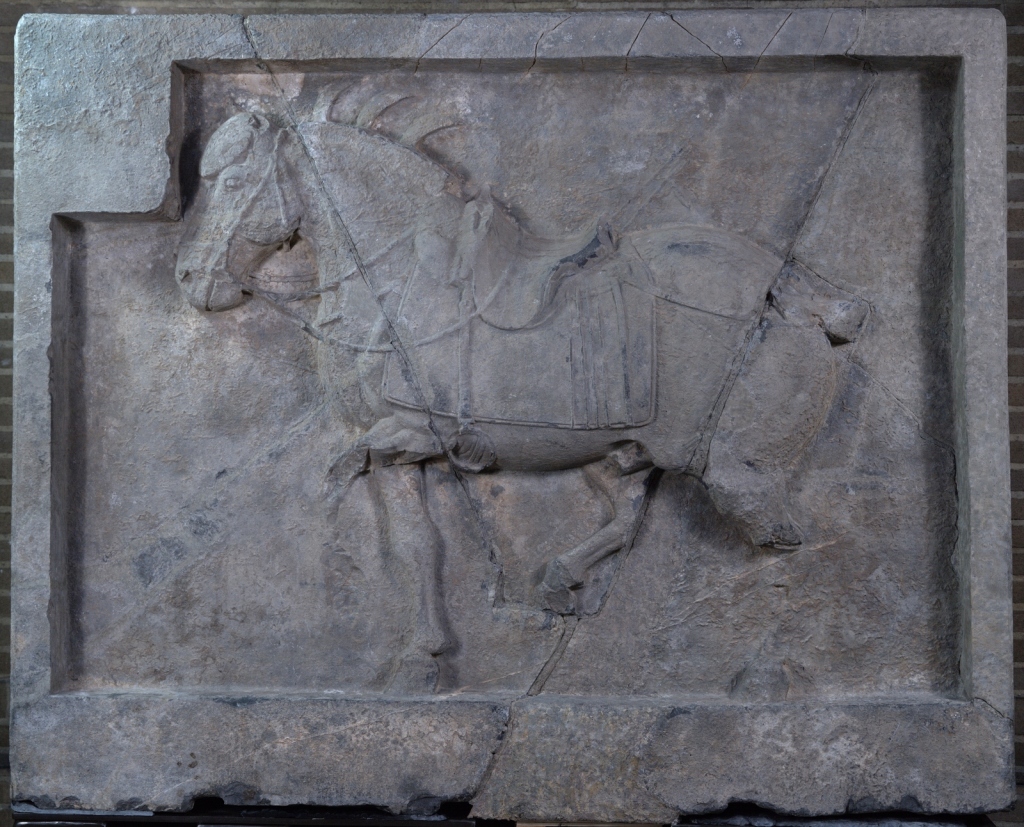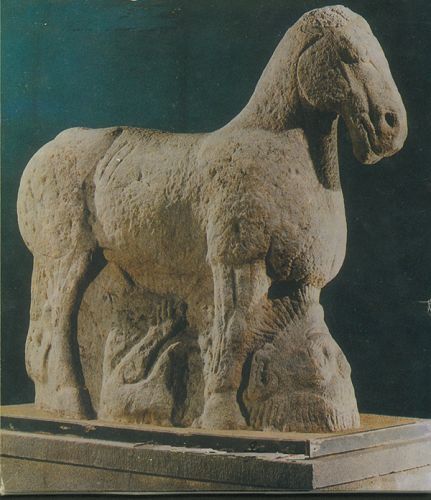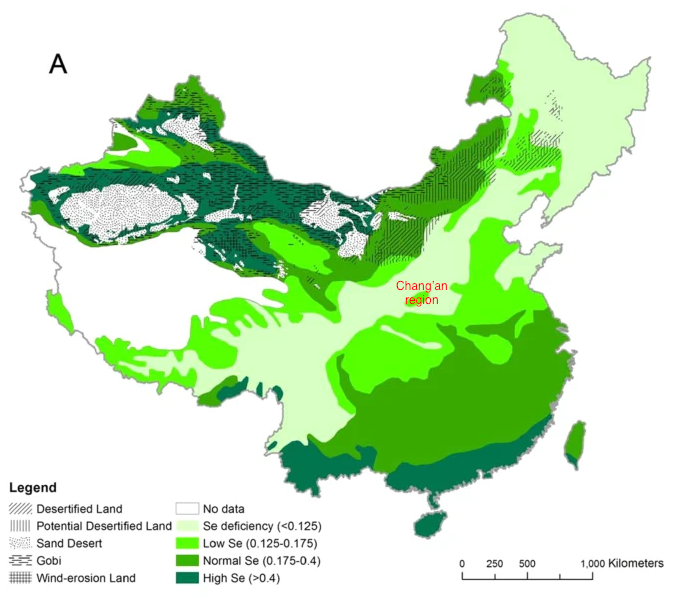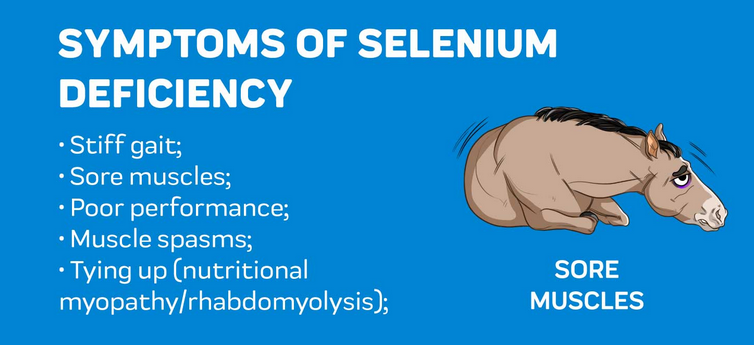
Penn Museum C396. Purchased from C. T. Loo; Subscription of Eldridge R. Johnson, 1920.
‘In climbing up and down mountains and crossing ravines and mountain torrents, the horses of China cannot compare with those of the Xiongnu.’1
This observation by Chao Cuo 晁錯 (ca. 200–154 BC), a minister in the Han empire ruling China at the time, exemplifies the history of the relationship between successive regimes in the Yellow River valley of China and the horse. Their repeated failure over two millennia to breed horses of sufficient quality and number in these lands to fulfill the needs of their armies meant that horses were a major and constant item of trade, being brought by sea and land from western and central Asia and the steppe. In a recent article, I review the literature on this, observing that most scholars have assigned one or both of two explanations for this failure. However, as I also observe, there is a third — and more compelling reason—namely the selenium-poor soils of much of the lands in what we now call China. This is a link noticed by Russian scholars but picked up by very few scholars writing in English. Below I give short extracts from my article concerning this.
The article will be published in volume 12 (2019) edition of Quaderni di Studi Indo-Mediterranei (series editor, Professor Carlo Saccone, University of Bologna) in commemoration of Bernard Laufer’s (1874–1934) Sino-Iranica. In addition to the preface by the guest editor, Dr Ephraim Nissan, there are 19 articles, all referencing essays by Laufer.
Edited extracts from ‘Alfalfa, Pasture and the Horse in China: A Review Article.’
China was not a land of horses, unlike Iran which, in a quote attributed to King Darius (c. 550–486 BC) ‘is abundant in horses’ and ‘does not tremble before any enemy.’2 Darius was himself an equestrian and, in the account given by Herodotus, gained the throne with the help of his horse. He duly erected a statue of himself on horseback with the inscription: ‘Darius, son of Hystaspes, by the virtue of his horse and of his groom Oebares, won the throne of Persia.’3 By contrast, Darius’s contemporary in the Yellow River valley, Confucius (c. 551–479), would not have known how to ride a horse: it was not among the six skills considered essential for the gentleman, although he would have used a horse-drawn chariot.4 While rulers of the many kingdoms in China in this period might also have led their armies from a horse-drawn chariot, they had no cavalry in their armies. The use of the horses for riding, initially for such cavalry, only appears to have been adopted among the kingdoms of northern China around the late 4th century BC in response to the rise of horse-riding neighbours on their north and northwestern borders, the Yuezhi to the northwest, Xiongnu to the north and Donghu to the northeast.5 Thereafter, both with the growth of the Xiongnu empire followed by successive Turkic and Mongolian steppe empires, the horse became essential to military life in northern China.

But even with alfalfa, pasturelands, good breeding stock and specialist horse breeders from neighbouring steppe lands, successive regimes in the Yellow River valley in China failed to produce sufficient horses for their needs. Most scholars give two reasons for this: first, the lack of pastureland with, they argued, suitable land always being taken for agriculture and, secondly, the lack of equine expertise among the peoples in this region.
Exemplifying the second of these is Herlee Creel, who writes:
‘It is hard to avoid the impression that to Chinese in general the riding horse remained something strange, almost foreign in nature. Horses, and horsemen, were in general associated with the border areas of the north and west. it is a striking fact that the grooms and handlers of horses appearing in Chinese art seem almost always to be depicted as non-Chinese.’6
Jonathan Skaff points out that considerable expertise is required for successful breeding:
’The importance of knowing how to breed and train horses should not be underestimated … it required specialized knowledge. … Preparation for warfare adds further difficulties because the horse is an ‘animal of “flight” rather than “fight,”’ yet for warfare it must be trained to ‘face loud noises, leap fences, charge into crows, and gallop at man’s command, often to its own destruction.’7
I find the argument of the lack of expertise unsatisfactory. First, the population was multi-ethnic with Turkic, Sogdian and other peoples who had the requisite skills. As Skaff notes for Tang-period (618–907) horse breeding, ‘personnel generally had birth and career patterns connections to North China or the China-Inner Asia Borderlands… In the provinces … men had origins in borderland regions, and often were Sogdian and other ethnic minorities.8 Secondly, skills can be learned and the government certainly had reason to provide incentive given their need. And, despite Creel’s argument, we see Chinese involved in horse breeding. For example, in their article on horse breeding on the steppe during the Yuan empire (1280-1367), Jagchid and Bowden quote a report by a Song envoy which states that, of the horse herdsmen, seven in ten are Chinese.9 The argument is also undermined when looking at the period of the Mongol Yuan dynasty which also struggled to breed sufficient horses in China proper. As Creel notes : ‘Under the Yuan dynasty large numbers of Mongols came to live in China, and one might suppose that the technique of breeding cavalry mounts would have become well-established in China. But there seems to be no evidence that it did.’10
The argument about the lack of pasture is also not convincing given that the government, given the need, could have ensured that land was set aside for this. China had alfalfa, a crop ideal for building strength, a quality Chinese-bred horses seemed constantly to have lacked. However, it is not essential or even necessary for successful horse breeding. As several authors point out, the Mongols rarely feed their horse with fodder. Denis Sinor cites advice given to the Franciscan John of Plano Carpini in Kiev concerning his horses in advance of his journey to Mongolia: ‘they would all die, for the snow was very deep and they would not known how to dig up grass from under the snow like the Tartar horses, nor would he be able to find anything else for them to eat since the Tartars have neither straw nor hay nor fodder.’11
Therefore even with alfalfa, pasturelands, good breeding stock and specialist horse breeders from neighbouring Turkic and Mongolian lands, successive Chinese regimes failed to produce sufficient horses for their needs. But, in a sense, these scholars were correct in that the lack of suitable pasture is perhaps the major reason for the failure of horse breeding in China. But the reason for its unsuitability was only identified in the twentieth century. And this has not found its way into most literature on the subject nor as yet, as far as I know, has been fully discussed. It provides a much more compelling explanation for the consistent failure of horse breeding in China and one which could not have been known nor easily remedied at the time. This is the fact that there is selenium deficient soil across much of China coupled with the necessity of selenium for horse health. In Richard Stone’s words, ’nowhere in the world are selenium levels as low as in a swath of land that arcs from Tibet in the southwest to Heilongjiang in the northeast.’12

Diagram from Sun et al. 2016.
Selenium was identified in 1817 but it was only in the 20th century that its importance to human health was understood following experiments on rats and farm animals. In 1935 Chinese scientists named an illness ‘Keshan disease’ after a county in Heilongjiang Province in the northeast of present-day China where an outbreak occurred. The disease was later found to be prevalent from southwest to northeast China and in 1973 selenium deficiency was recognised as a factor in its aetiology.13 It had a fatality rate of over 80%.
The importance of selenium for animals, including horses and cattle, has since been extensively explored and was identified as a cause of illness in cattle by 1934 although it essentiality was not recognized in western literature until 1957.14 The effects of selenium deficiency are similar in humans and animals. It leads to myopathy which ‘results in weakness, impaired locomotion, difficult in suckling and swallowing, respiratory distress, and impaired cardiac function.’15
As far as I have been able to discover to date, Russian scholars were certainly among the first to make this link between selenium-deficient soil and the failure of horse breeding in China. Jasper Becker noted this link in his 2008 book on Beijing following a conversation with Professor Lev Gumilyev in 1992.16 Johan Elversog, in his 2011 book, Buddhism and Islam on the Silk Road, is the only scholar I have found subsequently writing on horses in China to note this citation.17 Most others, including myself, had not picked up on this.

This would indeed explain why horses bred in the Yellow River valley could not, as noted by Chao Cuo above, ‘compare with those of the Xiongnu’. Or, in the words of the 16th century Jesuit, Matteo Ricci, were ‘so degenerate and lacking in martial spirit that they are put to rout even by the neighing of the Tartars’s steeds and so they are practically useless in battle.’18
NOTES
1 Hanshu 49-10b, quoted in Creel, Herrlee G. 1965. ‘The Role of the Horse in Chinese History.’ The American Historical Review 70(3), pp. 647–672 [657].
2 Laufer, Berthold. 1919. Alfalfa. In Sino-Iranica: Chinese Contributions to the History of Civilization in Ancient Iran. Chicago: Field Museum of Natural History, pp. 208-219. [210].
3 Herodotus (III.3.17) from translation by Aubrey de Sélincourt, 2003. Herodotus: The Histories. Harmondsworth: Penguin.
4 Archaeological evidence suggests that the horse-drawn chariot came into China around 1200 BC and that it only started to be adapted for war in the first millennium BC (see Shaughnessy, Edward. 1988. Historical Perspectives on the Introduction of the Chariot in China. Harvard Journal of Asiatic Studies, 48, pp. 189–238.)
5 Erkes, Eduard. 1940. Das Pferd im alten China. T’oung Pao. 2nd ser, 36(1), pp. 26–63 [52-4]. Shiji 110:6. trans. in Watson, Burton. 1958. Ssu-Ma Ch’ien: Grand Historian of China. New York and London: Columbia University Press. https://archive.org/details/ssumachiengrandh012602mbp/mode/2up p. 159). For a discussion of this adoption of cavalry see Di Cosmo, Nicola. 2002. Ancient China and Its Enemies: The Rise of Nomadic Power in East Asian History. Cambridge: Cambridge University Press, pp.134-8. Di Cosmo also notes that the Zhao king is said to have instructed his military to wear ‘the foreigners’ dress’ (hufu), ie. clothes suitable for riding. Hufu was to become an elite fashion statement in 8th century China.. For a depiction of horses in a tomb from this period see Cooke, Bill. 2000. Imperial China: The Art of the Horse in Chinese History. Lexington: Kentucky Horse Park. (2000) p. 119.
6 Creel, Herrlee G. 1965. The Role of the Horse in Chinese History. The American Historical Review 70(3), pp. 647–672 [670]. It is interesting that similar arguments have been proposed for unsuccessful horse breeding in India. So, for example, from Major-General Crawford T . Chamberlain, 1874,: ‘I ask how it is possible that horses could be bred at a moderate costs in the Central Division, when everything was against success. … 1st, to a damp climate, altogether inimical to horses; 2nd, to the operations being intrusted to a race of people inhabiting a country where horses are not indigenous, and who therefore have no taste for them.’ (Yule, Sir Henry and Henri Cordier (trans.) 1993. The Travels of Marco Polo. North Chelmsford, Ma.: Courier Corporation, 350). Following on from this, I searched for fdetails of soil selenium levels in India. A recent article on this suggests that there is some deficiency: ‘The research work on selenium in soils, plants and animals is of recent origin in India. Since milch cattle suffer due to selenium deficiency or toxicity through fodder, a systematic study of selenium was undertaken.’ (Sudhirendar Sharma (1984) Selenium research in India, International Journal of Environmental Studies, 22:3-4, 231-239, DOI: 10.1080/00207238408710122) – Also see this blog post on the horse in medieval India.
7 Skaff, Jonathan K. 2012. Sui-Tang China and Its Turko-Mongol Neighbors: Culture, Power, and Connections, 580–800. Oxford and New York: Oxford University Press quoting Downs (1961: 1193-5, n. 1192) and Creel (1970: 161). Also see Thomas Druml’s very interesting article discussing the three major types of horse of this period (2009), including breeding for elite riding of the type represented in Tang art, which he calls the classical riding horse.
8 Skaff (2017, p. 47-8.
9 Jagchid, S. and C. R. Baeden. 1965. Some Notes on the Horse Policy of the Yuan Dynasty. Central Asiatic Journal. 10, pp. 246-268 [249] quoting from folio 16V of the Heida shilue (黑韃事略), a work mainly by Peng Daya 彭大雅 describing his 1233-34 embassy to the Mongols for the Song dynasty. See also Skaff, on Wang Delun, one of the ranch directors, who was ethnic Han (2017, 51).
10 Creel (1965, p. 668). See also Smith, John Masson, Jr. 2009. From Pasture to Manger: the Evolution of Mongol Cavalry Logistics in Yuan China and Its Consequence. In Ralph Kauz et al (eds). Pferde in Asien: Geschiichte, Handel und Kultur. Leiden: Brill, pp. 63-74 [69] who cites a debate on whether to convert agricultural land in northern China into pasture.
11 Sinor., Denis. 1972. ‘Horse and Pasture in Inner Asian History.’ Oriens Extremus 19, 1/2: 171–183 [171] from Dawson, Christopher (ed.). 1966. Mission to Asia: Narratives and Letters of the Franciscan Missionaries in Mongolia and China in the Thirteenth and Fourteenth Centuries. New York: Harper and Row [52)] See also Sinor (1972, p. 177), where he quotes a source from 1221: ‘they never feed them with fodder … they pasture them on the steppe according to whether the grass is green or withered … They never give them beans of grain at all.’
12 Stone, Richard. 2009. A Medical Mystery in Middle China.” Science, New Series, 324, no. 5933, pp.1378-38: 1379 see also map on p. 1380. www.jstor.org/stable/20494115.
13 Ge, K. Y. & Yang, G. 1993. The Epidemiology of Selenium Deficiency in the Etiology of Endemic Diseases in China. American Journal of Clinical Nutrition, Supplement. 57. 259S-63S.
14 Sindeeva made the connection between selenium toxicity and animal disease, thought to be the reason for the observation in Marco Polo of horses/animals dying from eating a certain plant in the Tangut empire, in the northwest. Sindeeva’s book was translated into English and published in 1964, the same year as Rosenfield and Boath also put this link in English print. Sindeeva, Nina Dmitrevna. 1959. Минералогия, типы месторождений и основные черты геохимии селена и теллура. Moscow: Publishing House of the Academy of Sciences of the USSR; Eng. translation 1964: Mineralogy and Types of Deposits of Selenium and Tellurium etc. New York: Interscience Publishers.
15 Subcommittee on Horse Nutrition et al. 1989. Nutritional Requirements of Horses. 5th rev. ed. National Academy Press: Washington D.C. [17-18].
16 Becker, Jasper. 2008. City of Heavenly Tranquility: Beijing in the History of China. Oxford and New York: Oxford University Press [18]. The information about Gumilyev was given in personal communication with the author. I have yet been unable to find any earlier reference to this in Russian scholarship and do not know whether Gumilyev was the first to make this connection or whether it was first proposed by other Russian scholars.
17. Elverskog, Johan. 2011. Buddhism and Islam on the Silk Road. University of Pennsylvania Press [196]. This applies to most European language and Chinese language literature. I have not done a full search of Russian and other literature. Although I had heard of the selenium link, I had not been able to find any reference to it and thus also failed to reference this in my chapter on horses in my 2018 book.
18. Sinor (1971, p. 172), from Rossabi, Morris. 1970. The Tea and Horse Trade with Inner Asia During the Ming. Journal of Asian History 4: 136-168 [139].

Thank you for this very interesting article. I had previously seen the issue explained as calcium deficiency, which seemed surprising given the iconic karst landscapes of China, and I always hoped to see a detailed explanation. One reference is by Austin Coates in ‘China Races’, commissioned by the Royal Hong Kong Jockey Club to mark its centenary in 1984. The first page states that “the horse cannot be bred successfully in China due to the calcium deficiency in all organic matter”.
LikeLike
This iis a great post thanks
LikeLiked by 1 person